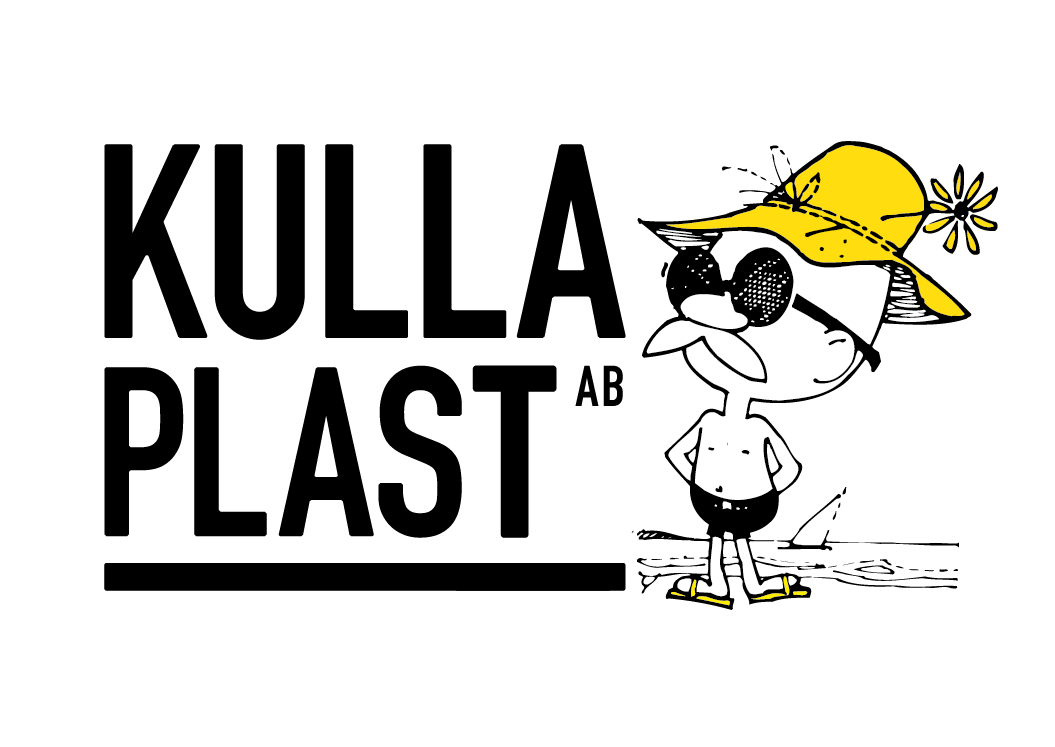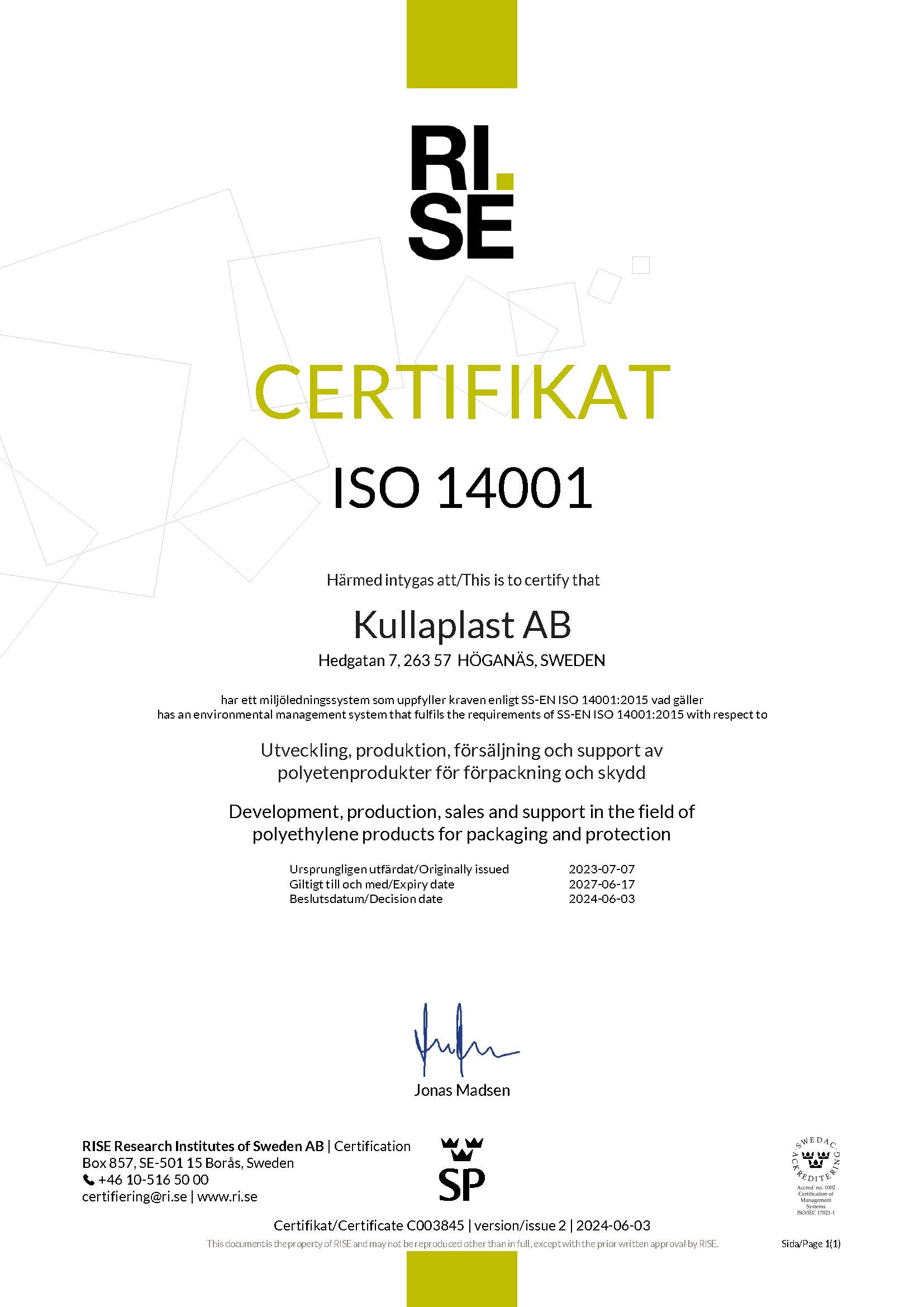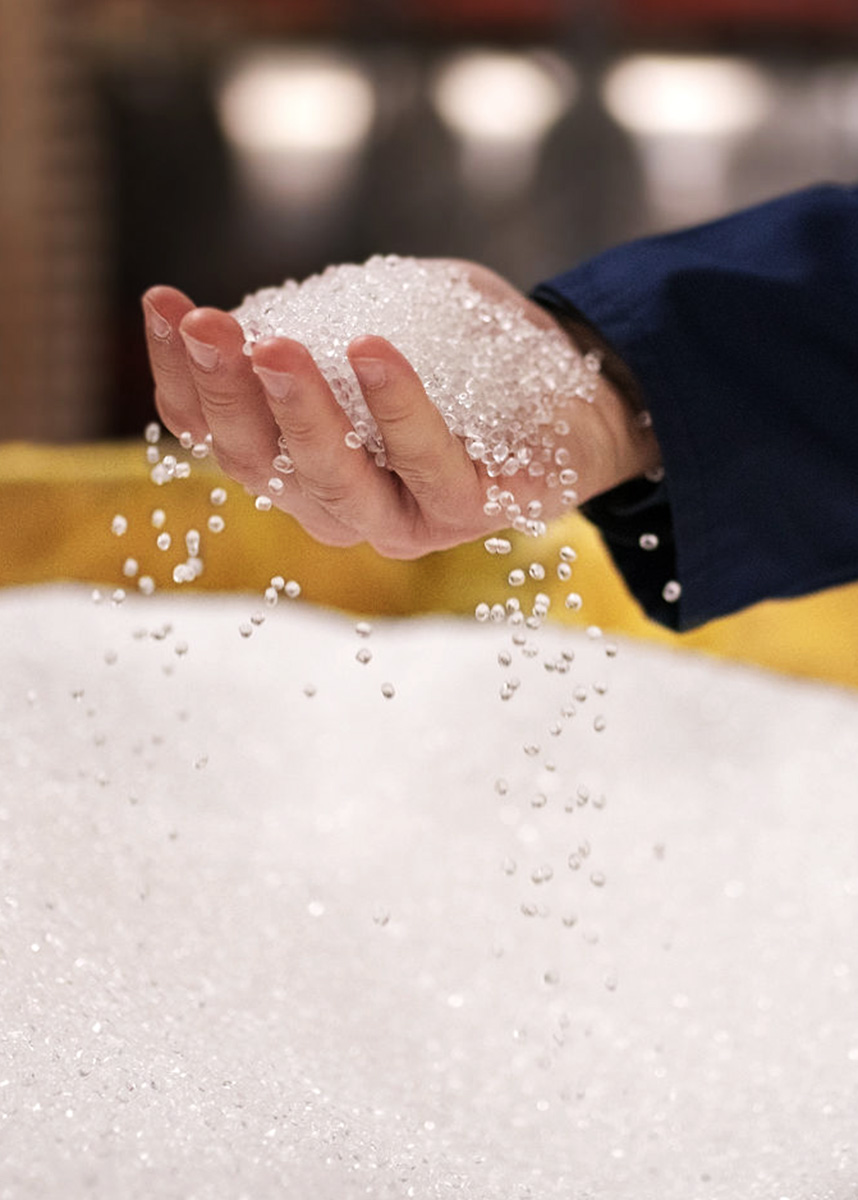
Properties of polyethylene
Polyethylene (PE) is a recyclable material with unique properties and several advantages. It does not absorb water, is elastic and can withstand contact with many different substances, holds its shape well and is easy to color. PE also has a low weight, which makes it advantageous to use for various packaging solutions as it increases transport efficiency.
With the help of various additives, we can fine-tune the properties of the PE film, adapted to the area of use and wishes. Properties that can be varied are, for example, clarity, strength, surface, printability, shrink ratio and welding properties.
Polyethylene often comes from fossil raw materials, but the development of non-fossil, recycled and bio-based alternatives is positive. Kullaplast will gladly help you to produce packaging that is of high quality and that also has a reduced climate footprint.
This is how you can make your packaging solution more climate-smart
- Replace all or some of your packaging with fossil-free or bio-based materials.
- Increase the use of recycled materials.
- Reduce the use of graphic prints on your packaging.
- Use as light pigments as possible when coloring, then the possibility of circular material flows for your plastic packaging increases.
- Inform your customers how to sort your packaging for recycling.
- Design plastic packaging and packaging for material recycling and you contribute to more circular plastic flows.
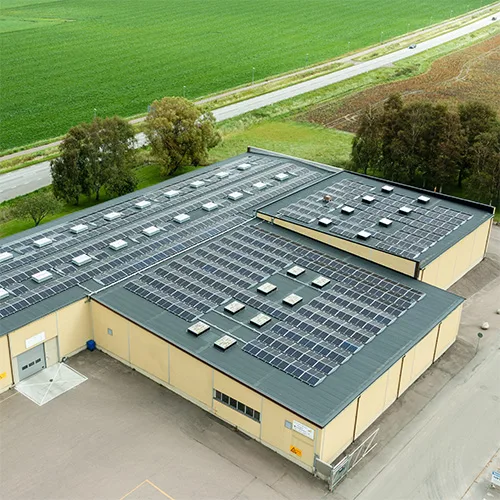
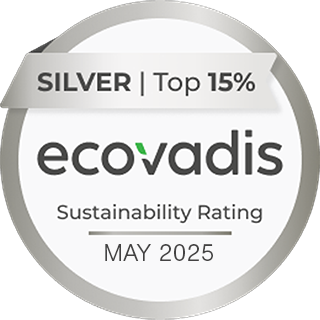
Kullaplast’s Sustainability Efforts
Kullaplast continuously invests in modern technology that reduces our climate footprint and increases our efficiency. This leads to more responsibly produced products and is a key part of our sustainability work.
In our product development, we aim to reduce the amount of material used, for example by producing thinner plastic film. One example is our long-term collaboration with customers to reduce the thickness of shrink film used for packaging cucumbers — it is now 57% thinner than when we started.
We take care of all waste material from our production and ensure it is recycled and reused in new products.
Kullaplast is affiliated with Näringslivets Producentansvar in Sweden and VANA in Denmark, which means that we, as a producer, cover the costs for the handling and recycling of all packaging materials we use in these countries.
Energy Efficiency in Practice
As an energy-intensive industry, we have a clear responsibility to use our resources as efficiently as possible. That’s why we continuously work to optimize our energy use through detailed energy audits and strategic investments in both equipment and facilities. Our goal is to reduce our dependence on purchased energy while strengthening our long-term competitiveness.
Today, the majority of our electricity supply comes from nuclear power — a stable and relatively climate-friendly energy source compared to fossil alternatives, even though it is not renewable. To further improve our energy mix, we have chosen to invest in our own energy sources such as solar power and geothermal heating. This reflects our deep commitment as a producer — to reduce our exposure to external factors and take control of our energy supply.
More than 30 years ago, we installed a geothermal heating system at our facility by drilling 17 deep energy wells. This solution serves as an efficient complement to purchased energy and provides an annual saving of approximately 438 MWh.
In 2023, we took another step forward by installing a rooftop solar power system with 750 panels. It has the capacity to generate up to 285 MWh of electricity per year, depending on sunlight hours. Together, our renewable energy sources now account for approximately 10% of Kullaplast’s total energy consumption.
Collaboration with a Sustainable Impact
Kullaplast collaborates with Samhall, an organization that helps individuals who are far from the labor market find employment. Since 2011, Samhall has provided cleaning services at Kullaplast, and we are very pleased with our colleagues from Samhall.
“We are proud to contribute to breaking social exclusion and creating a more socially sustainable labor market,” says Deputy CEO Oscar Skoglund.
Annual Sustainability Performance Assessment
Kullaplast achieved a Silver rating with 75 out of 100 points (May 2025), placing us in the 94th percentile and among the top 6% of 130,000 evaluated companies worldwide.
We are assessed annually by EcoVadis, the world’s largest and most trusted provider of business sustainability ratings.
The assessment covers the following areas:
– Environment
– Labor & Human Rights
– Ethics
– Sustainable Procurement
The methodology is based on international sustainability standards, including the Global Reporting Initiative, the UN Global Compact, and ISO 26000. It evaluates performance across four key themes: environment, labor and human rights, ethics, and sustainable procurement.
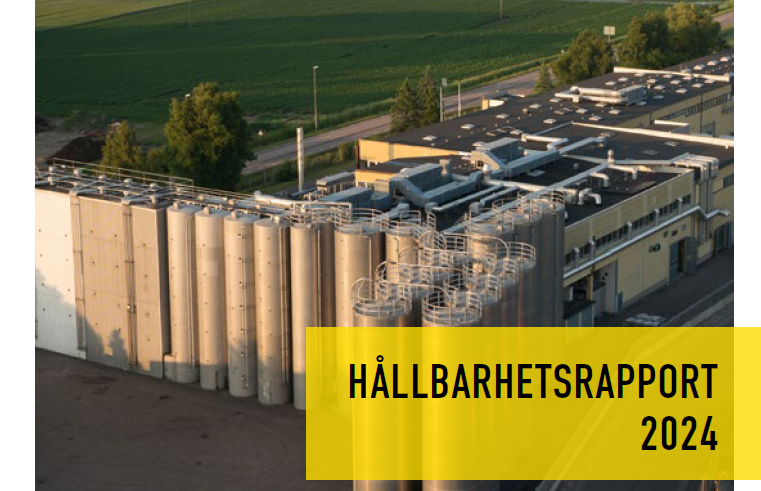
Sustainability Report 2024
More than just a collection of numbers – our sustainability report reflects our commitment, our values, and our determination to take responsibility for our shared future.
ISO 14001
Kullaplast is certified according to SS-EN ISO 14001:2015.
ISO 14001 help us minimize the negative impact our work processes have a on the environment (impact on air, water, and land). It is a proven environmental management system that drive us to continuous improvement based on environmentally adapted processes and acts as a guide when it comes to living up to environmental laws and requirements that exist for our business.
ISCC PLUS
Since 2021, we have been certified according to ISCC PLUS (International Sustainability & Carbon Certification), which is a global certification system for bio-based raw materials.
To favor the transition from fossil materials to renewable and recycled materials, we use an ISCC PLUS certified mass balance method. This means that we can ensure traceability for all stages of our production chain.
Mass balance is about mixing fossil, recycled or renewable material into existing production while keeping track of its quantity and allocating it to specific products. Our ISCC material contains fat waste, a residual product from the food and restaurant industry. The actual carbon molecules in the final product may not come from recycled or renewable materials, but a third-party certificate verifies the content.
Simply explained, the mass balance method is used to save an identical volume of fossil raw material by replacing it with sustainable raw material that enables actual savings in CO2 emissions.
Our ISCC PLUS certification is regularly reviewed and third-party verified.
Kullaplast AB
Kullaplast AB is one of Sweden’s biggest producers of polyethylene packaging. We manufacture packaging and packaging solutions for the food industry, the construction industry and other packaging solutions.
